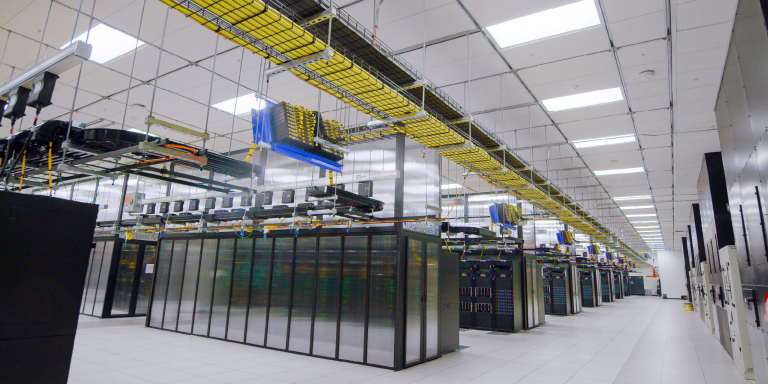
Facebook founder and Meta CEO Mark Zuckerberg announced on Monday, Jan. 24, the construction of the AI Research SuperCluster (RSC) supercomputer, which is among the fastest AI supercomputers today and is expected to be the fastest by mid-2022, when it is finalized. Researchers are already using it to train large models in natural language processing (NLP) and computer vision. RSC will enable the creation of technologies for the metaverse, the next big computing platform where AI-driven applications and products will play an important role.
The first computers appeared in the 1960s and were first used for scientific research. Since then, their power has continued to increase and their computing capacity is now measured in exaflops (more than a billion billion operations per second). The United States, China, Japan and Europe are in the race for exaflops computers, with world technological domination at stake. RSC will allow Meta to make a name for itself in the field of metavers, an ambition clearly stated when Facebook changed its name to Meta:
“Meta’s goal will be to bring the metaverse to life and help people connect, find communities and build businesses.”
Mark Zuckerberg elaborates on RSC:
“The experiments we’re creating for the metaverse require enormous computing power (quintillion operations per second!) and RSC will enable new AI models that can learn from trillions of examples, understand hundreds of languages, and more.”
The Research SuperCluster supercomputer
The supercomputer will allow Meta to leverage data from its various platforms, (Facebook, Messenger, Instagram…) to train AI engines, particularly in the area of language or image processing. It will replace Meta’s infrastructure designed in 2017, which has 22,000 Nvidia V100 Tensor Core GPUs and performs 35,000 training tasks per day.
“While our previous AI research infrastructure only used open access data and other publicly available datasets [RSC will] enable the use of real world examples” from Meta’s platforms.”
He also assured:
“This is the first time that performance, reliability, security, and privacy have been considered on such a large scale.”
A supercomputer
Supercomputers are built by combining multiple GPUs into compute nodes that are then connected by a high-performance network structure that enables fast communication between GPUs. RSC includes a total of 760 Nvidia DGX A100 systems as compute nodes, for a total of 6,080 GPUs. Each GGX communicates via a two-tiered NVIDIA Quantum 1600 Gb/s clos fabric with no oversubscription. The RSC storage tier includes 175 petabytes of Pure Storage FlashArray, 46 petabytes of cached memory in Penguin Computing Altus systems and 10 petabytes of Pure Storage FlashBlade.
The RSC’s power now matches that of the U.S. Perlmutter, the world’s fifth largest supercomputer in terms of computing power, according to the TOP500 list. Meta continues to evolve RSC with the goal of making it the most powerful supercomputer in the world, including a cache and storage system that is expected to reach 1 exabyte, or the equivalent of 36,000 years of high-quality video.
It will become “to our knowledge the most powerful artificial intelligence supercomputer in the world,” Meta assures.
Translated from Meta dévoile le AI Research SuperCluster, superordinateur d’intelligence artificielle qui sera à terme le plus puissant du monde









